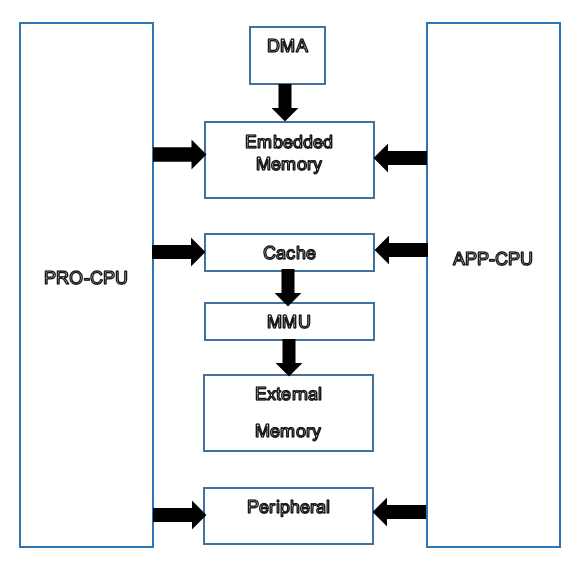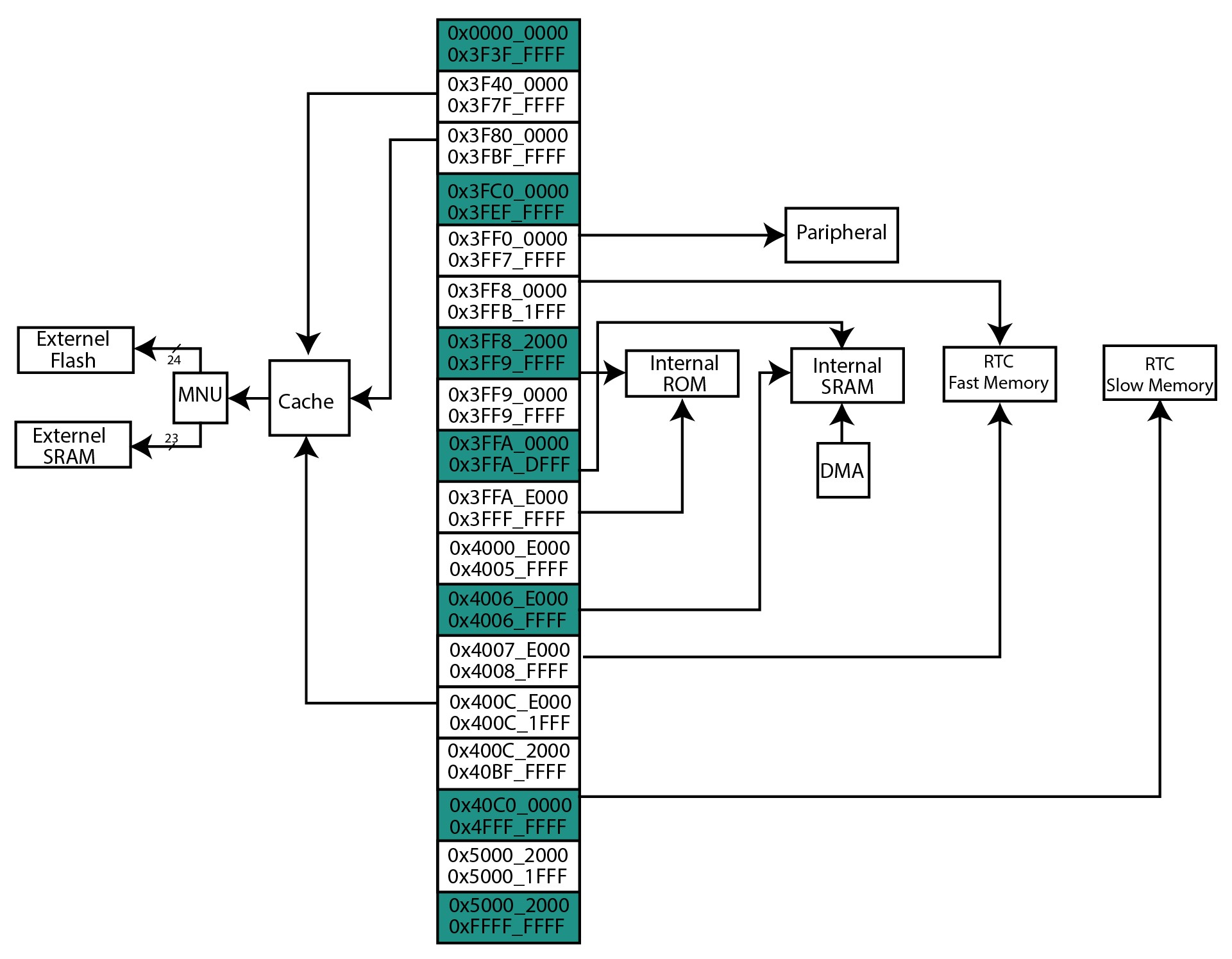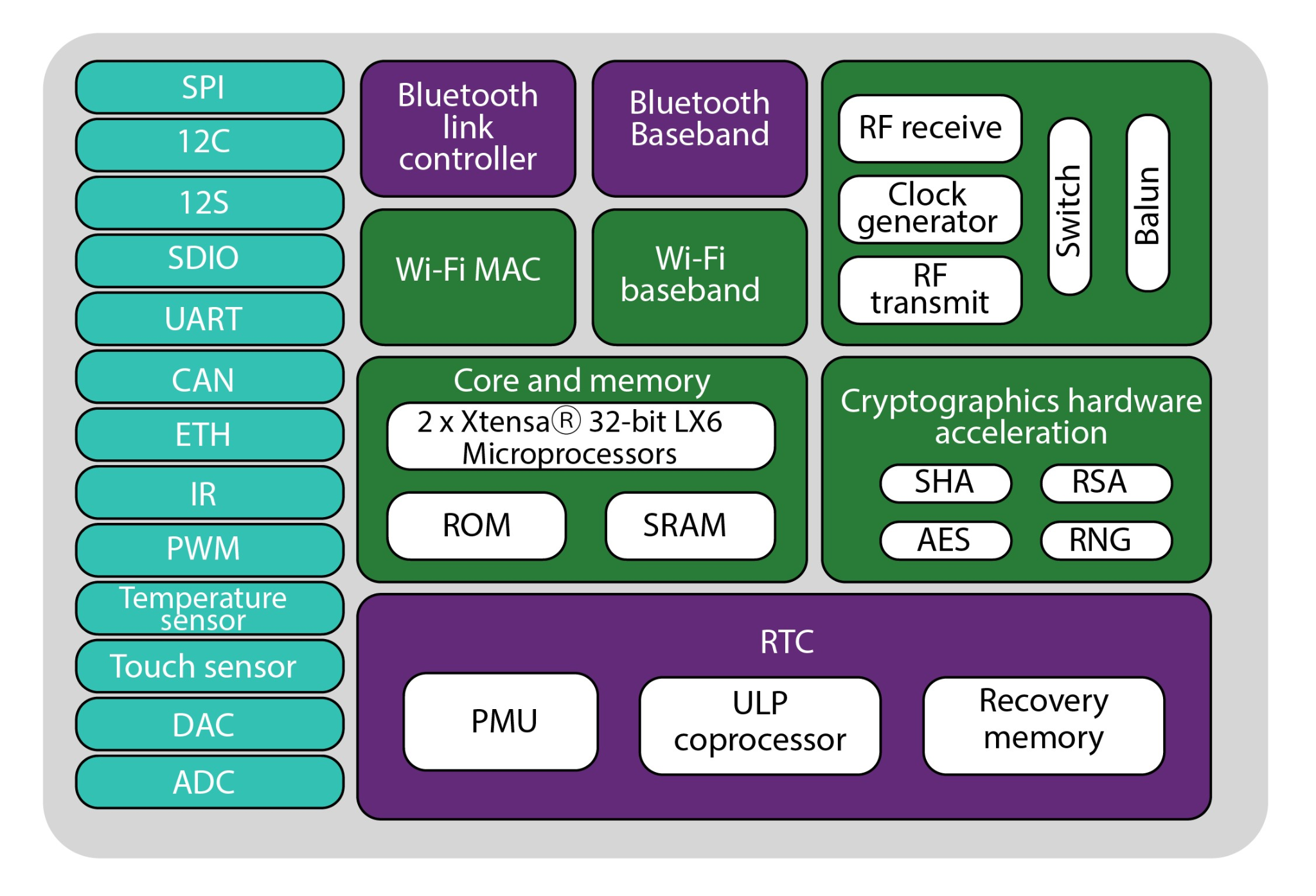Microprocessor Chips Used in ESP32
The chips used in ESP32 microcontroller units are Tensilica Xtensa LX6 single-core and dual-core microprocessors and LX7 dual-core microprocessors. It depends on which type of ESP32 SoCs you are using. In the ESP32 S series, Xtensa LX7 microprocessors are used whereas in the ESP32-C series and ESP32 LX6 dual-core microprocessors are used.
Main Features of ESP32 Chip
Here, we will discuss the main features of the Tensilica Xtensa LX6 32-bit dual-core and LX7 microprocessor. Except for ESP32- S0WD, all other ESP32 microcontrollers have dual-core processors. The main features include its dual-core processor, architecture, block diagram, memory, peripherals, Bluetooth, and Wi-Fi protocols used in it.
Dual Core Processor
The Tensilica Xtensa LX6 and LX7 have dual cores. The names of the cores are PRO-CPU and APP-CPU. Pro-CPU stands for Protocol CPU and APP-CPU stands for Application CPU. The Protocol CPU is designed to handle user-end features such as Wi-Fi, Bluetooth, and Peripherals. The Application CPU is designed to handle codes in ESP32. Both these cores are linked to the memory and address registers. The cores of LX6 have a clock frequency of 160 MHz, and that of LX7 is 240 MHz. The figure below shows the mapping of CPUs to memory.
Architecture
The Tensilica Xtensa LX6 and LX7 microprocessors have a 32-bit RISC architecture. Therefore, the memory units and peripherals are designed in such a way that they can communicate with 32-bit address registers. The architecture mapping is shown in the diagram below in which it can be seen that all peripherals, internal ROM and SRAM, Real-Time Communication memory Fast and Slow, cache memory, and external flash, all are mapped with 32-bit address registers.
Block Diagram
As we have gone through the basic architecture and mapping of LX6 and LX7 microprocessors, we can now get a comprehensive look at the Xtensa LX microprocessor blocks through a block diagram. The block diagram shows the separate blocks for each unit in the microprocessor. It consists of peripherals, a Bluetooth unit, a Wi-Fi unit, Radio Frequency (RF) Transmitter and Receiver, a memory unit, Real Time Clock, and a unit for cryptographic security.
Internal and External Memory
The Xtensa LX7 microprocessor has 512 KB SRAM for data and instructions and 384 KB ROM to perform functions like booting. It has 8 KB SRAM Real-Time Communication (RTC) memory each for fast and slow communication. It can also support an external flash of up to 32 MB.
The Xtensa LX6 microprocessor has 520 KB SRAM for data and instructions and 448 KB ROM to perform functions like booting. It has 8 KB SRAM Real-Time Communication (RTC) memory each for fast and slow communication. It can also support an external flash of up to 16 MB.
Integrated Peripherals
There are numerous peripherals in a single microprocessor chip LX6 or LX7 by Tensilica Xtensa. This is a very advanced kind of microcontroller chip with so many peripherals. They include UARTs, SPIs, timers, touch sensors, SPIs, Counters, I2S and I2C Interfaces, Pulse Width Modulators, digital-to-analog, and analog-to-digital converters.
Wi-Fi
These microprocessor chips LX6 and LX7 use Internet Protocol by IEEE 802.11 b/g/n. It operates at a very high speed with a frequency range of 2.4GHz. They also support Wi-Fi Direct, which ensures efficient peer-to-peer communication.
Bluetooth
The microprocessor chips LX6 and LX7 have low-energy Bluetooth version 4.2 that can co-exist with Wi-Fi and has a fast speed as well. Formerly, Bluetooth and Wi-Fi modules were used separately with microcontrollers. However, these advanced microprocessor chips have incorporated Bluetooth and Wi-Fi into them, making ESP32 very user-friendly and efficient.
Conclusion
ESP32 uses two models of Tensilica Xtensa dual-core microprocessor chips, namely LX6 and LX7. These chips are very advanced with multiple useful features including improved connectivity, a greater number of peripherals for users, enhanced memory, and compactness.



